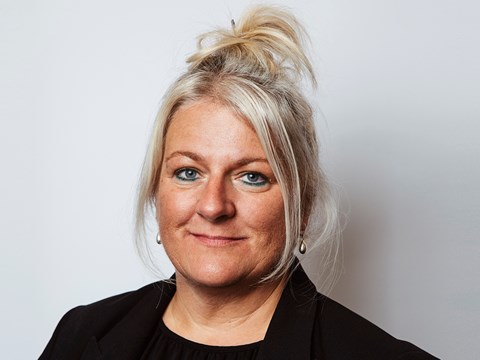Talking Hats - Are We Oversimplifying The Briefing Conversation?
25 Aug 2022
Imagine you’re going out for a meal at a fancy restaurant. You’d expect to take your time, immersing yourself in the experience and savouring every mouthful of all 3 courses, with time no issue (relatively). But if your food was made quickly, and brought to you all at once in a variety of takeaway boxes with plastic cutlery, you’d be horrified. Compare that to what you’d expect if you visited a drive through where speed and convenience are essential, and more than a 15 minute wait would raise eyebrows .
There’s no single best method for operating a restaurant: the experience should match the customer’s expectations, which screams to me a differentiated approach. This is the problem with the current briefing conversation. It remains a hot topic, but to my mind it's often oversimplified with one-size-fits-all thinking, suggesting a lack of understanding of how client teams work, the scope of work and therefore the wide range of briefs on the go at any given time.
The issue, in brief…
I’m certainly not criticising any discussion intended to drive better practice, but I think we need to acknowledge the complications and look deeper to help marketers develop better briefing skills, and raise the craft across the industry.
There are just so many different types of briefs, all with different purposes and needs, so a one size fits all approach doesn't cut it if we are going to take a leap forward in solving this repetitive issue.
To give your in-house or agency team what they need to create their best work, you need to be prepared to put on a number of different hats… and differentiate your “brief writing” approach according to the outcome needed..
Respect the three ‘I’s
It’s helpful to look at things simply: for a brief to be effective, it needs to balance three key elements:
- Informing
- Instructing
- Inspiring
This is a simple graphic equaliser, but it’s hugely powerful at differentiating the requirements of different briefs - for instance, a simple change brief should be heavy on ‘instruct’ but lighter on ‘inspire’, compared to a new creative platform, brand strategy or new product launch where the opposite would apply.
Using this equaliser effectively requires careful thought, and a clear vision to identify the needs of the brief. To achieve this, it’s helpful to talk about hats (yes hats!). Five actually…
The Detective Hat
In crafting a fantastic brief, the first hat you’ll need to wear is that of a detective, exploring, probing and being curious about the context for the brief. The ‘why’ and ‘what’ this brief must achieve. You should be asking questions: what’s the context? What’s the competition doing? What consumer insight do we have, and what does it tell us? What's the problem, tension or opportunity we are trying to solve?
You should be wearing this hat well before you start writing the brief, to inform the right balance between informing, inspiring, and instructing. This ‘detective’ phase is about doing the right amount of leg work and research for the task. Think about your sources, be that customer complaints and feedback, web reviews and survey results, store visits, call centres, focus groups, or bespoke research. Also think about the context for the brief - in ‘hat terms’, think about the ‘scene of the crime’.
For some briefs, you’ll only need to wear this hat for 30 minutes, whilst others will require weeks of in depth work - and possibly even a pre-briefing stage well ahead of the final brief. Make that call now and move forwards with absolute clarity.
The Chef Hat
Once you’ve finished your detective work, the chef’s hat comes next - this is where you select the right ingredients and prepare them in the right way.
Sure, you could make Spaghetti Bolognese with just mince, tomato puree and pasta, but would it taste great? A few clever ingredients can transform the dish, from roasted peppers to sundried tomatoes, marmite to chocolate and (apologies to any Italians reading!) apparently chicken livers. And the same is true of briefs.
If the brief is complex, and requires complex ingredients, you’ll need to spend time with your chef hat on sourcing, gathering and testing. Make sure you’re giving your in-house or agency team the right ingredients to work with as stimuli, to instruct, inform or inspire their work and give them as much of a chance as possible of achieving their best.
The Storyteller Hat
Once you’ve done your detective work, and assembled your ingredients, it’s time to put it all together and don your storyteller hat. In the case of a brief, this means creating a compelling throughline, or as we like to say at AAR, the consistent DNA that runs through the brief. Time to tell one story, well.
Does everything connect together in your brief? Do all of the different elements of your brief knit together, in the same way a great story does? It needs to connect to the reader, whether that’s an internal or external team, and it needs to leave them saying ‘oooh’ rather than ‘eh?’
Consistency and connection is key: the story has to resonate. Imagine a novel with the first third written by Stephen King, the second by Margaret Atwood, and the last by J.R.R Tolkein. It would probably be a right head mash. The same applies here: if your brief jars, so will the creative process for your agency.
The Scientist Hat
Along with storytelling, you do need a bit of science too. When wearing your scientist hat, you need to approach things analytically. Are you being precise enough about the numbers, the objectives, the metrics, KPIs, budgets, and timescales?
You need to make sure things are measurably defined; for example what are you driving awareness to, by what, in what time frame, and using what data? What will a successful metric or KPI look like?
One of the most repetitive issues, in my experience, is a lack of objectives or - even worse - over use of the dreaded ‘tbc’, which gives no sense of scale, intent, or ambition to deliver against.
For some briefs, simply being on time and on budget might be an acceptable metric; for others, work should not start until there is 100% internal alignment of customer, marketing, and business objectives if the stakes and ask of the brief are fuzzy.
You can also differentiate by the amount of time your agency or in-house team has for different briefs. While a bolognese might taste better if simmered gently for 3 hours, some things don’t need to be cooked slowly (you wouldn’t stew beans on toast!), and depending on the type of brief you’re working on, asking for a quick response may or may not be suitable.
The Editor Hat
This one is simple, and involves a BIG (virtual) red pen working to the 3 r’s: refine, reword, and remove! How much editing you do will depend on the type of brief, but being to the point, succinct, honest, and warm will be best in almost any case. And ditch the jargon and buzzwords. Please.
Giving yourself the right amount of time to reflect here is vital. As Blaise Pascal beautifully put it “I have only made this letter longer because I have not had the time to make it shorter”. Be sure to bake in adequate reflection time, be that 10 minutes, a couple of hours, or overnight in the case of complex briefs.
The key goal during this stage is to make sure that every word is meaningful to this brief. As with any great dish, every ingredient must count, and only the right ones should be used.
Conclusion
Clients are under more commercial and creative pressure than ever, and while it’s brilliant that we’re talking about how we can brief better, we need to move the conversation out of the singular mindset arena.
We need to stop talking about creating ‘a brief’ and start exploring the potential of creating the ‘right type of briefs’, for the many and varied challenges today’s marketers face. We need to perfect the art of being clear and effective with the ask, the task, and the intent for the work - in every kind of brief we create.
To get this right, you’re going to need to get comfortable wearing the hats I’ve mentioned above. If you don your different hats, and consider the three I’s in the graphic equaliser, then you’ll already be helping your agency or in-house team deliver their very best work: whatever the type of brief.
About The Author





